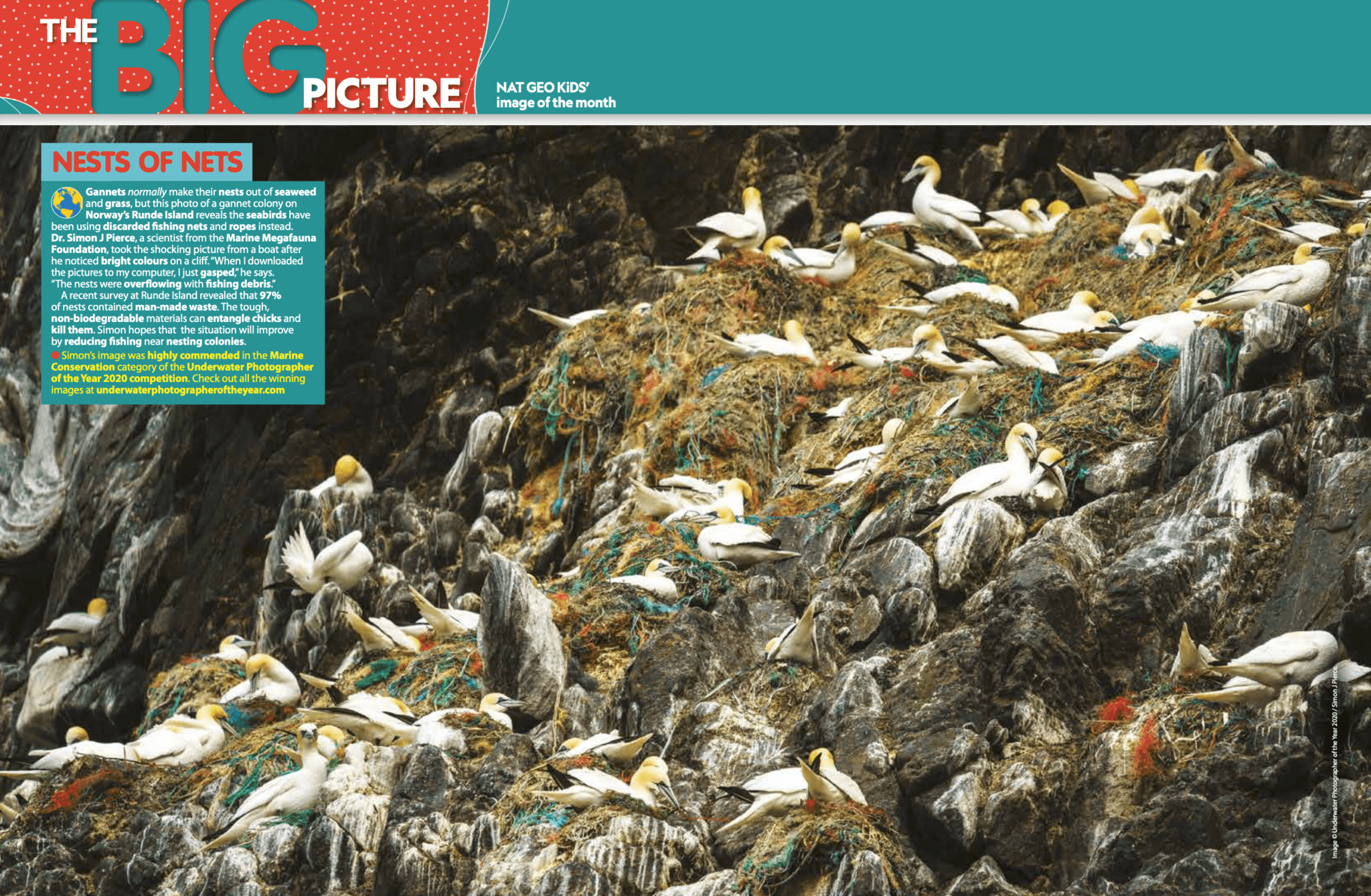Net Loss: Photographing Seabirds and Plastic Pollution in Norway
Dr. Simon J Pierce is a co-founder of the Marine Megafauna Foundation, where he leads the global whale shark research program, and an award-winning marine wildlife photographer. About Simon.
Plastic in the ocean is a problem. That will be news to precisely none of you. It’s still worth talking about though, even now. Plastic is an obvious part of all of our lives and, despite the global scale of the concern, it’s one of the most immediately actionable marine conservation issues.
People are stepping up to meet that challenge. We’re taking it personally. We’re choosing not to use disposable plastics. We’re cleaning local beaches. We’re putting pressure on big businesses too, with Waitrose supermarkets in the UK reporting an 800% increase in customer questions on their use of plastic.
Of the people that watched that program, 88% said it changed their own behavior afterwards.
As a marine conservation biologist myself, ocean plastic is increasingly, and unavoidably, becoming a part of my own work. Inadvertently, the work sometimes continues during my time off. Case in point – last year I went on a Norway cruise with my mum. (I know right. How cool am I.) Anyway, I did take a short break from the buffet to visit Runde Island, off Ålesund. The island is a seasonal home to over half a million seabirds, including the nesting northern gannets that I was hoping to photograph. Runde has been designated as a globally “Important Bird Area” by BirdLife International.
Runde Island, Norway
Northern gannet at Runde Island, Norway
While I was bouncing around in a small boat, trying not to freeze while watching the gannets fly to and from their nesting sites high on the nearby cliffs, I noticed that there was some colour up amongst their nests. I’m not a bird expert, but I was pretty sure that wasn’t normal. I bumped up my shutter speed, fired off a few shots, and hoped to figure it out later.
Northern gannet nesting cliff at Runde Island, Norway
When I did download the photos, I just gasped. The gannets’ nests were overflowing with fishing debris, as you can see here:
Northern gannets at Runde Island, Norway, with plastic-filled nets
Gannets normally build their nests from seaweed and grass floating on the ocean’s surface. Increasingly, the seabirds are using discarded netting, ropes, and packaging straps from fisheries instead. This fishing waste seems to be becoming more common than the natural materials they instinctively gather. A recent survey at Runde Island found that 97% of their nests contained man-made debris3. Newborn chicks, and even adult gannets4, are routinely entangled and killed in these tough and non-biodegradable materials5.
The United Nations’ FAO estimates that at least 640,000 tonnes of fishing gear is lost every year around the world. Reducing the fishing pressure close to nesting seabird colonies has been shown to lead to fast and measurable declines in the number of affected birds5. That suggests a range of practical solutions: reduce the pollution from the fishing boats themselves, minimise net fisheries in the local region, or create protected areas that allow the ecosystem to recover.
It’s clear that the fishing industry, responsible for a lot of the debris seen off Norway, needs to help fix this. So how do we, as consumers, make this happen? For those of us who do eat fish ourselves, we can support certified sustainable fisheries. The world’s largest certification agency, the Marine Stewardship Council (MSC), allows its “blue fish label” to be used on seafood products from fisheries that meet its standards. We can also help to influence and evolve the definition of what a sustainable fishery actually looks like in 2020. The MSC isn’t explicitly including plastic discards from fishing into their certification process at this stage, but they’re at least working with fisheries to monitor gear losses and to implement ongoing improvements. It’s a start.
We’ve always relied on birds to act as sentinels of change – whether it be canaries in coal mines, swallows arriving at the start of summer, and now seabirds as a barometer of pressure on our oceans. It’s time for us to start giving back.
Simon.
Sources
Battisti et al. (2019) Interactions between anthropogenic litter and birds: A global review with a ‘black-list’ of species. Marine Pollution Bulletin
Roman et al. (2019) A quantitative analysis linking seabird mortality and marine debris ingestion. Scientific Reports
O’Hanlon et al. (2019) Monitoring nest incorporation of anthropogenic debris by northern gannets across their range. Environmental Pollution
Votier et al. (2011) The use of plastic debris as nesting material by a colonial seabird and associated entanglement mortality. Marine Pollution Bulletin
Bond et al. (2012) Prevalence and composition of fishing gear debris in the nests of northern gannets (Morus bassanus) are related to fishing effort. Marine Pollution Bulletin











